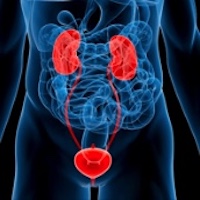How urologists deal with chronic prostatitis? The preliminary results of a Mediterranean survey

Accepted: March 12, 2020
All claims expressed in this article are solely those of the authors and do not necessarily represent those of their affiliated organizations, or those of the publisher, the editors and the reviewers. Any product that may be evaluated in this article or claim that may be made by its manufacturer is not guaranteed or endorsed by the publisher.
Authors
Objectives: We performed a questionnaire survey to investigate various issues in the diagnosis of chronic prostatitis (CP) performed by Greek urologists and to assess some aspects of prostatitis workup in Greece. Replies were compared with those of Italian clinical research partners in an attempt to clarify the CP diagnostic approaches in Southern European Mediterranean countries. Methods: We translated the original Italian questionnaire presented by Magri and Montanari in the frame of a urological congress held in Milan on October 26th, 2018. Τhis 5-item questionnaire explores clinical practice characteristics, attitudes, and diagnostic strategies for the management of chronic prostatitis (Chronic Bacterial Prostatitis or Chronic Prostatitis/Chronic Pelvic Pain Syndrome, according to NIH criteria). After its validation the questionnaire was uploaded in the internet and Greek healthcare professionals were invited by mail to respond. Responses were compared with those of Italian urologists, in order to determine similarities and differences in attitudes between clinicians regarding the diagnostic assessment of CP. Results: There is a wide variation in participants' preferences for diagnostic methods, laboratory tests and clinical examinations both in Italy and in Greece. In both countries many diagnostic tests performed in affected patients are only geared to exclude other treatable conditions (e.g., benign prostatic hyperplasia, bladder cancer), but more suitable methods and tests for the assessment of CP are less frequently used. Conclusions: Urologists' choices for the diagnostic workup of CP, show a wide international or intra-national variability between Greece and Italy. Although several diagnostic tests are available to differentiate and categorize the types of CP, a large number of urologists use less suitable methods and tests. This fact reflects both the lack of consensual vision in the literature and the difficulties encountered on a daily basis by the physicians. Under the light of this evidence, the need of studies establishing consensual guidelines for the optimal diagnosis of CP is becoming imperative.
How to Cite
PAGEPress has chosen to apply the Creative Commons Attribution NonCommercial 4.0 International License (CC BY-NC 4.0) to all manuscripts to be published.

 https://doi.org/10.4081/aiua.2020.4.353
https://doi.org/10.4081/aiua.2020.4.353



